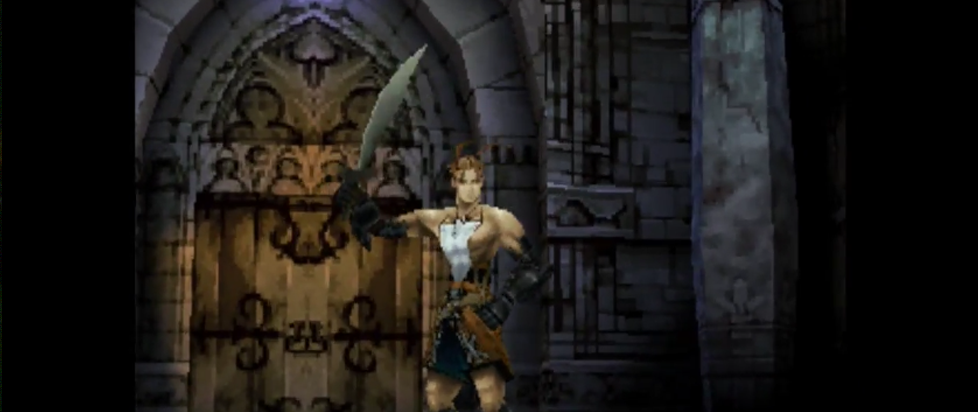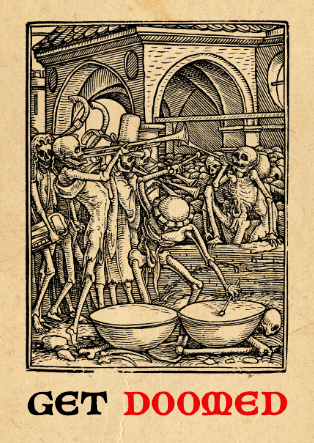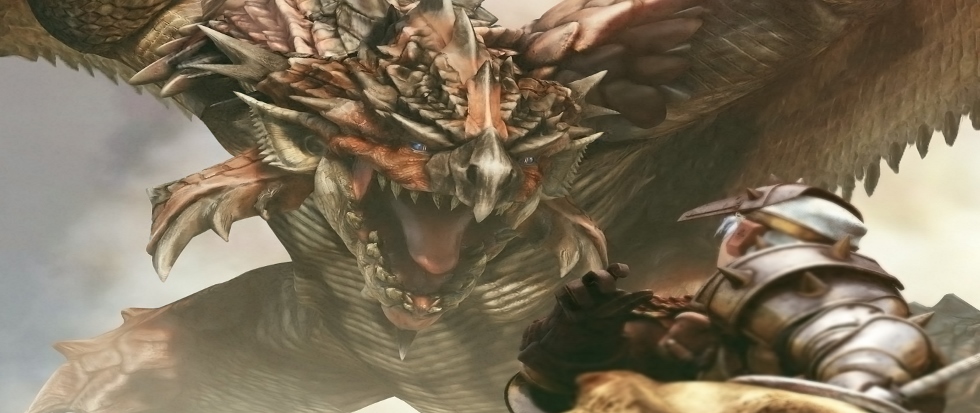
Ashley Riot and the Human Workshop
We live in an imagined world, one drawn by the lines of architects and urban planners, whose work decides where we will go and what we will do. The grip of the human will on the environment is all around us in obvious coercions. Nature is rolled up, soil and turf, and the earth is scalped. The river is encased in brick and concrete. Scant domesticated parks survive. The air is poisoned, and we breathe it for it is life. Under human management, poison is life. It is this contradiction that defines the conflict of Vagrant Story, a contradiction of language in the minds of human beings.
The city, and game setting, of Leá Monde is both an embodiment of this contradiction and a monument to abstract human construction. The city was a bustling metropolis but also a book of magic drawn up through the assemblage of its streets, an evil mandala for the harvesting of dark power. The book was burnt. The spell that destroyed it cursed its inhabitants never to die, to return again and again. In Leá Monde, death is life, and life everlasting, death.
Like Leá Monde, protagonist Ashley Riot burnt up in the exercise of his duty. We soon learn that his personality is a chimera of backstories fused in memory. Picture cracked glass, and on either side of the cracks a version of the past: Riot’s family was murdered. Riot was a soldier who murdered the family. Riot was both and neither. What is undeniable is that Riot is the glass itself, a host to different realities, neither more factual than the other but simply an exercise of the capacity of language to contort itself in mockery of truth. The different angles of Riot’s backstory are his own returning dead.
A key idea of Vagrant Story holds that the individual can be shaped in the same way as a city, so they may labor more effectively in another’s name. Language does not record the universe but merely transmits the speaker’s will, and as language is thought itself, it follows that the human mind can be a medium that an author can work in. (It is registered, somewhere in the background of the action, that a country’s ruling class is embroiled in a power struggle of which the main cast are the expression.)
A bit of cleverness that belongs to Vagrant Story is its anticipating the medium’s power to transform mechanical play into story devices and narrative into a concrete praxis. Long before it becomes apparent that an unknown hand modelled Riot’s motivation, the player’s agency is tickled with mechanical interactions that tempt the same brand of creation. We are offered the master’s chisel to practically realize the game’s thesis with our own hands. The depiction of the pursuit of power cannot be complete without the player’s spontaneous performance of it.
On one hand, we follow the process of direct learning by which a character levels up, an RPG device that nakedly symbolizes the creation of Ashley Riot — it is not a question of numbers going up, but of a human being becoming more complex, an advancement that corresponds to the ever complicating plot. More in the abstract, the diegetic forces that permit this shaping are people who wanted a tool and created one with the same philosophy they use to govern a nation. An expert killer is a precious resource.
On the other hand, a far more effective symbol are the game’s crafting mechanics. Rather than experience the illusion that inhabiting another character we ourselves passively receive the benefits of leveling up, we directly think of crafting as the impression of our strategic need upon an object — a sword, say, that can act as a stand-in for the individual under the microscope of power.
Vagrant Story achieves this by employing a strategy of personification. To understand this, we must consider the following:
A weapon’s
- Type is its physical form. Whether it cuts, smashes, or stabs is determined by the player in an earlier assembly process of more basic components.
- Class is its ability to damage enemies that correspond to certain labels. Human and Undead are part of a longer chain of specialization, each label dominating the next. The more we expose a weapon to a given foe, the more adept it becomes at combating it, but the more vulnerable it becomes to another. In other words, weapons can be trained.
- Affinity is a connection to an element, such as fire or earth. Unlike classes, affinities are comfortable with one another, but only the highest affinity commands. The player can artificially boost this value, so the weapon’s natural affinity can be erased in favor of more desirable outcomes.
- Damage Points represent durability. As a weapon interacts with the world, it degrades, and must be maintained lest it lose all its threat.
- Phantom Points measure its increasing deadliness. The more a weapon is blooded, the more of these points are accrued. This value is also used to pay for recovering Damage Points, so the weapon’s convalescence comes at the cost of its battle readiness.
The lynchpin of these different stats are two features:
Weapons encode their experiences numerically. When two weapons combine, their memories combine.
Manipulating these memory features yields useful identities. Tellingly, the weapon may be named. But while this initially leads us to create a flexible roster of knives, axes, crossbows, and so on, the mounting lethality of the arsenal slowly builds into the real goal of the crafting system: to forge a weapon able to concentrate even mutually exclusive abilities within itself, one that can destroy all enemies and thrive in any environment. In other words, the praxis of weapon crafting is a pursuit of an absolute power similar to that sought by the game’s political actors.
One final detail. Crafting must be performed in special rooms called workshops. These specialize in one or two materials, be it steady bronze, iron, or hagane, or holy silver and almighty Damascus. I propose another, finer material, one shaped in a human workshop. This final workshop labors by order of an unseen figure — this might be the nobility that scarcely appears in the game, or perhaps the game’s creators and true architects of Leá Monde. Whatever the case, this manifest invisibility of the ultimate will behind the action speaks to the inability of the ruled to even comprehend why their lives take the form that they do. Vagrant Story suggests that we, like Ashley Riot, might not live in the truth, but in someone else’s winning strategy.





